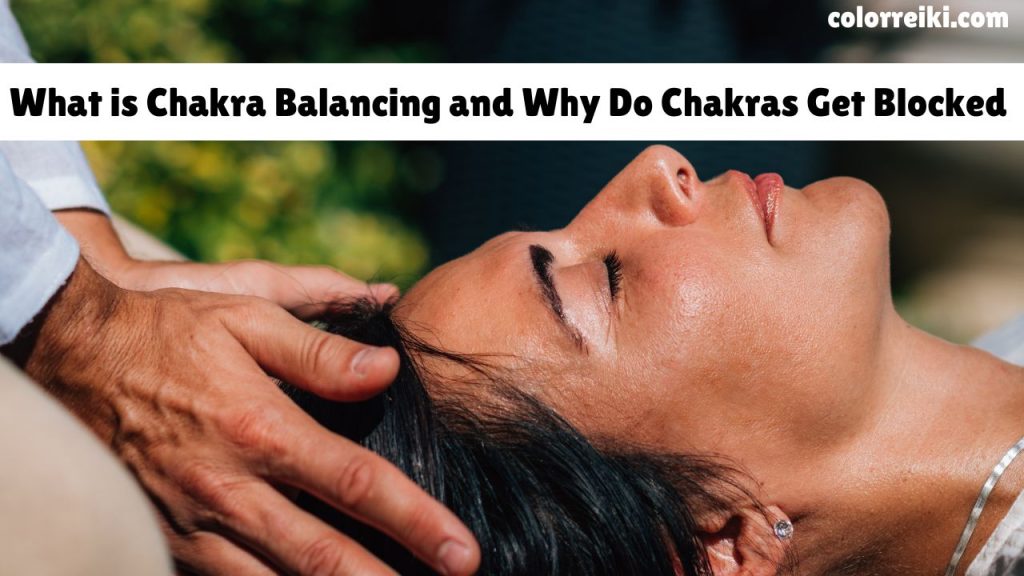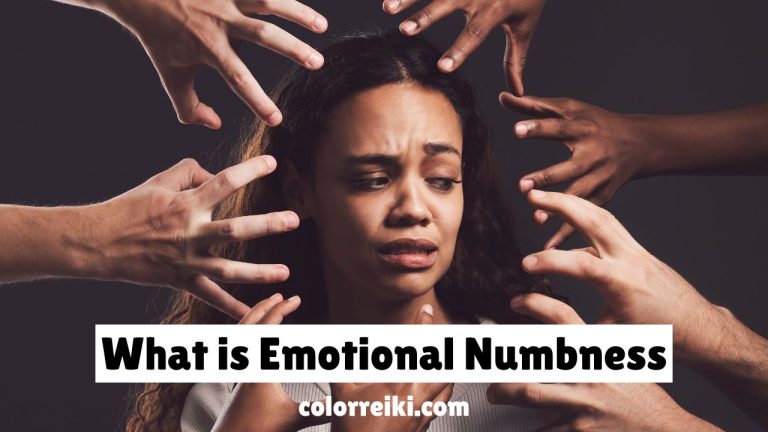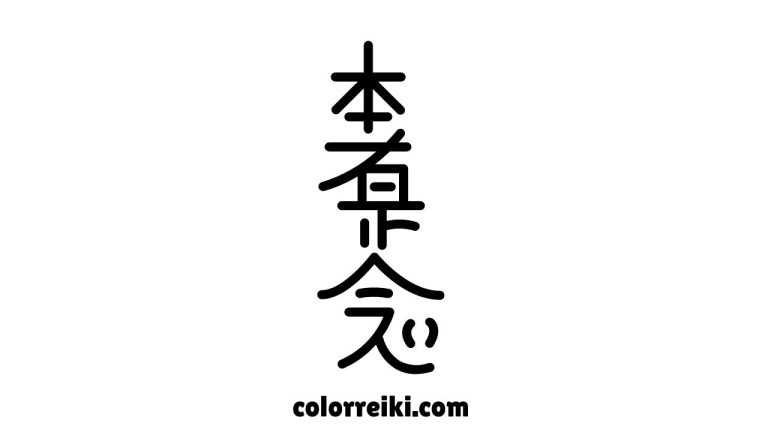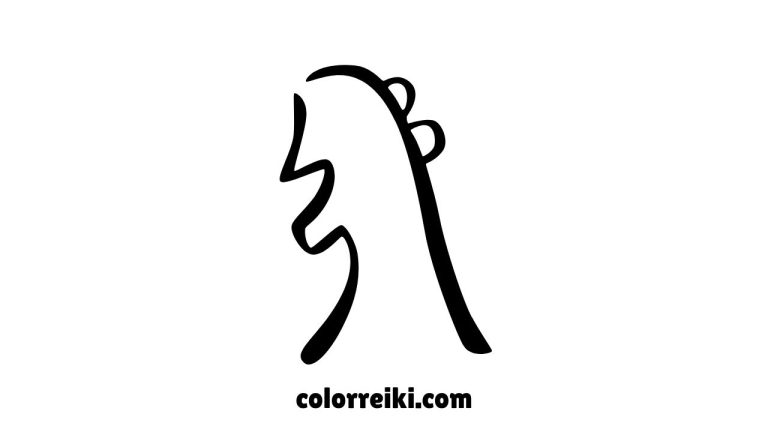What is Chakra Balancing: Why Do Chakras Get Blocked?
In today’s fast-paced world, it’s common to feel overwhelmed, stressed, and out of sync. These feelings may often be rooted in something deeper—imbalances in our body’s energy centers, known as chakras. Chakras play a vital role in our overall well-being, acting as pathways for energy to flow throughout our bodies.
When these energy centers are blocked or out of balance, it can lead to physical discomfort, emotional turmoil, and spiritual disconnection. Fortunately, chakra balancing is a powerful practice that can help restore harmony and bring about a sense of peace and wellness. This article will guide you through the basics of chakras, the symptoms of imbalance, and the various ways to achieve chakra balance, with a focus on Reiki practices.

What Are Chakras?
Chakras are energy centers located along the spine, each connected to specific physical, emotional, and spiritual aspects of our lives. The word “chakra” comes from Sanskrit and means “wheel,” symbolizing the spinning energy at each point. There are seven main chakras, starting from the base of the spine and extending to the crown of the head. When these chakras are balanced, energy flows easily, contributing to overall well-being. However, when one or more chakras are blocked or out of balance, it can disrupt this flow, leading to various issues.
Overview of the 7 Chakras and Their Roles
Root Chakra (Muladhara): Located at the base of the spine, the Root Chakra is linked to feelings of safety, security, and survival. When balanced, it helps us feel grounded and stable.
Sacral Chakra (Svadhisthana): Positioned just below the navel, the Sacral Chakra is connected to creativity, sexuality, and emotional expression. A balanced Sacral Chakra promotes healthy relationships and emotional well-being.
Solar Plexus Chakra (Manipura): Found in the stomach area, the Solar Plexus Chakra is the center of personal power, self-esteem, and confidence. When this chakra is balanced, we feel empowered and in control of our lives.
Heart Chakra (Anahata): Located in the center of the chest, the Heart Chakra is the link between the lower and upper chakras. It is associated with love, compassion, and forgiveness. A balanced Heart Chakra allows us to give and receive love freely.
Throat Chakra (Vishuddha): Situated in the throat, the Throat Chakra governs communication, self-expression, and truth. When balanced, we can express ourselves clearly and truthfully.
Third Eye Chakra (Ajna): Positioned between the eyebrows, the Third Eye Chakra is linked to intuition, insight, and wisdom. A balanced Third Eye Chakra enhances our ability to see beyond the physical and connect with our inner guidance.
Crown Chakra (Sahasrara): Located at the top of the head, the Crown Chakra is associated with spiritual connection, enlightenment, and unity with the universe. When this chakra is balanced, we experience a deep sense of peace and oneness with all that is.
What is Chakra Balancing?
Chakra balancing is the practice of restoring harmony to the chakras, ensuring that energy flows smoothly throughout the body. This can be achieved through various methods, including meditation, yoga, energy healing practices like Reiki, and even lifestyle changes. The primary benefit of chakra balancing is the promotion of overall well-being. When our chakras are balanced, we feel more at peace, emotionally stable, and spiritually connected. Chakra balancing can also alleviate physical symptoms that result from energy blockages, such as pain, fatigue, or digestive issues.
Why Do Chakras Get Blocked?
Chakras can become blocked or out of balance for many reasons. Life experiences, such as stress, trauma, negative emotions, and unhealthy habits, can all disrupt the natural flow of energy in the body. For example, if you experience a significant amount of fear or insecurity, it might block your Root Chakra, leading to feelings of instability and anxiety. Similarly, unresolved anger or communication issues can block the Throat Chakra, making it difficult to express yourself clearly. Understanding these causes is the first step in addressing and correcting chakra imbalances.
Symptoms of Chakra Imbalance
When one or more chakras are out of balance, it can show up in different ways, both physically and emotionally. These symptoms are often the body’s way of signaling that something is wrong with the energy flow. By paying attention to these signs, you can identify which chakras might be blocked and take steps to restore balance.
Physical, Emotional, and Spiritual Effects of Imbalance
- Physical Symptoms: Each chakra corresponds to specific areas of the body. For instance, an imbalance in the Root Chakra may result in lower back pain, while a blocked Throat Chakra can cause sore throats or thyroid issues. Other physical symptoms might include headaches (Third Eye Chakra), digestive issues (Solar Plexus Chakra), and heart problems (Heart Chakra).
- Emotional Symptoms: Emotional imbalances are common signs of chakra blockages. For example, an unbalanced Sacral Chakra can lead to issues with emotional expression, resulting in mood swings or emotional numbness. Similarly, an overactive Solar Plexus Chakra might cause anxiety or a need for control, while a blocked Heart Chakra can result in feelings of loneliness or an inability to connect with others.
- Spiritual Symptoms: On a spiritual level, chakra imbalances can lead to a sense of disconnection from oneself or the universe. A blocked Crown Chakra, for example, might cause feelings of isolation or a lack of purpose. An unbalanced Third Eye Chakra can result in a lack of intuition or difficulty seeing the bigger picture.
How to Do Chakra Balancing Reiki
Reiki is a powerful energy healing practice that can be used to balance the chakras. It involves the transfer of energy through the hands of a practitioner to the client, to restore balance and harmony to the body’s energy centers.
- Prepare the Space: Start by creating a calm and serene environment. This could be a quiet room with dim lighting, soothing music, and comfortable seating or lying arrangements.
- Center Yourself: Both the practitioner and the client should begin by taking deep, calming breaths. This helps to center the mind and prepare the body for the energy work ahead.
- Hand Positions: The practitioner will place their hands over each chakra, either directly on the body or slightly above it, allowing the energy to flow from their hands into the client. The session typically starts at the Root Chakra and moves upward to the Crown Chakra.
- Visualize and Intend: During the session, both the practitioner and the client can visualize each chakra as a spinning wheel of light, focusing on clearing any blockages and restoring balance. Positive intentions and affirmations can also be used to enhance the healing process.
- Close the Session: After the Reiki session, it’s important to ground the energy. This can be done by focusing on the Root Chakra and visualizing a strong connection to the earth. The client should take their time to slowly return to full awareness, followed by a few moments of quiet reflection.
Tips for Reiki Practitioners and Clients
- Communication is Key: Before the session begins, discuss any specific issues or intentions with the practitioner. This helps to focus the energy work where it’s needed most.
- Stay Open: Both the practitioner and the client should remain open to whatever comes up during the session. Sometimes unexpected emotions or memories may surface, which can be an important part of the healing process.
- Follow-Up Care: After a Reiki session, it’s important to stay hydrated and allow time for rest. This helps the body integrate the energy shifts that occurred during the session.
How to Rebalance Your Chakras on Your Own
While working with a Reiki practitioner can be incredibly beneficial, there are also many ways to balance your chakras on your own. Daily practices such as meditation, yoga, and mindful breathing can help maintain chakra balance and promote overall well-being.
Self-Care and Energy Healing Techniques
- Meditation: One of the most effective ways to balance your chakras is through meditation. Focus on each chakra in turn, visualizing it as a spinning wheel of light. Imagine the light growing brighter and more vibrant as you breathe into the chakra, clearing away any blockages.
- Yoga: Certain yoga poses are particularly effective at stimulating specific chakras. For example, Mountain Pose (Tadasana) is great for grounding and balancing the Root Chakra, while Camel Pose (Ustrasana) opens the Heart Chakra. Incorporating these poses into your yoga practice can help maintain chakra balance.
- Breathing Exercises: Pranayama, or controlled breathing exercises, can also help balance the chakras. For example, deep belly breathing can energize the Solar Plexus Chakra, while alternate nostril breathing can balance the Third Eye Chakra.
- Visualization: Visualization techniques can be used throughout the day to maintain chakra balance. For instance, if you’re feeling anxious or ungrounded, take a few moments to visualize your Root Chakra connecting deeply with the earth.
Benefits of Chakra Balancing
Chakra balancing offers many benefits, both immediate and long-term. By keeping your chakras open and balanced, you can experience a wide range of positive effects on your physical, emotional, and spiritual health.
- Better Physical Health: Balanced chakras support the proper functioning of the body’s systems. For example, a balanced Heart Chakra can promote cardiovascular health, while a balanced Solar Plexus Chakra supports digestion.
- Improved Emotional Stability: When your chakras are in harmony, you’re better equipped to handle life’s challenges. Emotional imbalances, such as anxiety or depression, can be alleviated, allowing you to experience more joy, peace, and contentment.
- Spiritual Growth: Chakra balancing helps you connect more deeply with your spiritual self. A balanced Crown Chakra, for example, can lead to a greater sense of purpose and a stronger connection to the universe.
What to Expect After a Chakra Balancing Session
After a chakra balancing session, you may feel a variety of sensations and emotions as your body adjusts to the new energy flow. It’s important to be gentle with yourself during this time and allow your body to integrate the changes.
Potential Outcomes and Experiences
- Increased Energy: Many people report feeling more energized and vibrant after a chakra balancing session. This is because energy that was previously blocked is now flowing freely throughout the body.
- Emotional Release: It’s common to experience an emotional release after a session. This could be in the form of crying, laughing, or simply feeling lighter. This release is a sign that blockages have been cleared and healing is taking place.
- Improved Clarity: Balancing the chakras can also lead to greater mental clarity and focus. You might find that you’re able to make decisions more easily or that you have new insights into problems that were previously difficult to solve.
- Physical Sensations: Some people experience physical sensations, such as tingling or warmth, in the area of the chakras during or after the session. These sensations are a sign that energy is moving and healing is occurring.
Is Reiki Effective for Balancing Chakras?
Reiki is a well-known and effective method for balancing the chakras. This gentle, non-invasive energy healing practice works by channeling energy into the body to clear blockages and restore balance. Although Reiki is considered a complementary therapy and more research is needed to fully understand its effects, there is growing evidence that supports its benefits. Studies have shown that Reiki can help reduce stress, improve mood, and enhance overall well-being. Many practitioners and clients alike report significant improvements in their health and happiness after incorporating Reiki into their lives.
Conclusion
Chakra balancing is a powerful and transformative practice that can bring about profound changes in your physical, emotional, and spiritual well-being. By understanding the chakras and how to keep them in balance, you can lead a more harmonious and fulfilling life. Whether you choose to work with a Reiki practitioner or practice self-care techniques at home, exploring chakra balancing can help you find peace, clarity, and connection in your everyday life. Take the time to nurture your energy centers, and you’ll discover a deeper sense of harmony and well-being.
FAQs
1. What happens when all 7 chakras are balanced?
When all 7 chakras are balanced, energy flows smoothly throughout the body, leading to physical health, emotional stability, and spiritual connection. You may feel more at peace, more in tune with your surroundings, and more capable of handling life’s challenges.
2. What are the symptoms of chakra imbalance?
Symptoms of chakra imbalance can include physical pain or discomfort, emotional instability, and spiritual disconnection. Specific symptoms depend on which chakra is blocked, such as anxiety with a blocked Solar Plexus Chakra or throat issues with a blocked Throat Chakra.
3. How to activate the Third Eye?
Activating the Third Eye Chakra involves practices such as meditation, visualization, and yoga. Focus on the area between your eyebrows during meditation, and imagine it opening up to receive wisdom and insight. Yoga poses like Child’s Pose and forward bends can also help stimulate the Third Eye Chakra.
4. How does chakra balancing help to heal your body?
Chakra balancing helps to heal the body by removing energy blockages that can cause physical ailments. When energy flows freely through the chakras, the body’s natural healing processes are enhanced, leading to better health and vitality.
5. How long does it take to unblock chakras?
The time it takes to unblock chakras can vary depending on the individual and the methods used. Some people may experience immediate relief after a session, while others might need several sessions to fully clear blockages.






